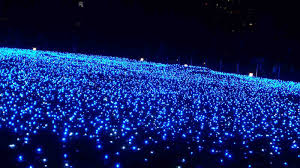
Breaking News
 New Drone Rules Will Pave the Way for Starbucks and Amazon Deliveries
New Drone Rules Will Pave the Way for Starbucks and Amazon Deliveries
 Grand Theft World Podcast 247 | LICENSE TO GENOCIDE with guest Scott Horton
Grand Theft World Podcast 247 | LICENSE TO GENOCIDE with guest Scott Horton
 The Collapse of Britain's National Health Service
The Collapse of Britain's National Health Service
 BREAKING: CONGRESS MOVES TO NULLIFY BIDEN'S PROTECTION OF FAUCI, MILLEY, SCHIFF...
BREAKING: CONGRESS MOVES TO NULLIFY BIDEN'S PROTECTION OF FAUCI, MILLEY, SCHIFF...
Top Tech News
 Chinese Scientists Produce 'Impossible' Steel to Line Nuclear Fusion Reactors in Major Break
Chinese Scientists Produce 'Impossible' Steel to Line Nuclear Fusion Reactors in Major Break
 1,000 miles: EV range world record demolished ... by a pickup truck
1,000 miles: EV range world record demolished ... by a pickup truck
 Fermented Stevia Extract Kills Pancreatic Cancer Cells In Lab Tests
Fermented Stevia Extract Kills Pancreatic Cancer Cells In Lab Tests
 3D printing set to slash nuclear plant build times & costs
3D printing set to slash nuclear plant build times & costs
 You can design the wheels for NASA's next moon vehicle with the 'Rock and Roll Challenge
You can design the wheels for NASA's next moon vehicle with the 'Rock and Roll Challenge
 'Robot skin' beats human reflexes, transforms grip with fabric-powered touch
'Robot skin' beats human reflexes, transforms grip with fabric-powered touch
 World's first nuclear fusion plant being built in US to power Microsoft data centers
World's first nuclear fusion plant being built in US to power Microsoft data centers
 The mitochondria are more than just the "powerhouse of the cell" – they initiate immune...
The mitochondria are more than just the "powerhouse of the cell" – they initiate immune...
 Historic Aviation Engine Advance to Unlock Hypersonic Mach 10 Planes
Historic Aviation Engine Advance to Unlock Hypersonic Mach 10 Planes
 OpenAI CEO Sam Altman Pitches Eyeball-Scanning World ID to Bankers
OpenAI CEO Sam Altman Pitches Eyeball-Scanning World ID to Bankers
Blue Light Reduces Blood Pressure, Just as Effectively as Medication – UK Study

An exciting new study says that exposure to blue light is an effective, non-pharmaceutical treatment for high blood pressure, which simultaneously reduces the risk of developing cardiovascular disease.
During this study, which was published in the European Journal of Preventative Cardiology, participants were exposed to 30 minutes of whole-body blue light at approximately 450 nanometers – a dose comparable to daily sunlight – followed by exposure to a control light on a different day.
Visible blue light, as opposed to ultraviolet (UV) light, is not carcinogenic. To assess the impact, participants' blood pressure, stiffness of arteries, blood vessel dilation, and blood plasma levels of nitric oxide stores were measured—before, during, and up to two hours after irradiation with both lights.
The researchers who conducted the study from the University of Surrey and Heinrich Heine University Duesseldorf discovered that exposure to whole-body blue light significantly reduced the systolic blood pressure of participants by almost 8 mmHg, compared to the control light which had no impact.



